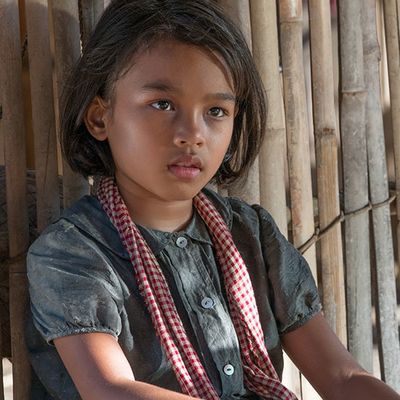
First They Killed My Father is the kind of film you spend more time thinking about your reaction to as opposed to thinking about the film itself. That may not be a problem in and of itself. After all, is it a failure if a film whose all-but-stated goal is to illuminate the horrific events it depicts, is not a knockout of artistic and entertainment value? Or would such a knockout only strengthen its cause? Is it unequivocally shitty to be the person lamenting the cinematography in Angelina Jolie’s Khmer Rouge movie, or am I only thinking it because I care so much?
These questions feel familiar, because they are the same questions that run through my head through any number of unimaginative real-life tragedy I’ve seen onscreen in the past year and since forgotten. First They Killed My Father seems fated to get added to that pile, and it’s a shame, because this chapter in South Asian history in all its complexity and historical context is so seldom presented to American audiences. But amid all the important facts, I longed for something unnecessary from the filmmaker, some expressive flourish whose sole purpose isn’t just to convey information. Again I find myself typing the words, “It’s an unquestionably worthy story, I just wish it was told with more inventiveness.”
The film is based on the memoir of the same name by Loung Ung, whom Jolie befriended in 2002 after she first became a goodwill ambassador for the U.N. Ung was 7 years old when the Cambodian genocide began. She had been living with her relatively well-off family in Phnom Penh, one of several children of a government official when the Khmer Rouge communist movement took over the city and moved everyone to work camps, where they were made to give up their possessions and farm and embrace a “selfless” lifestyle. The sudden and drastic shift in young Loung’s reality is made worse by the horrible conditions at the camp, and the constant fear that her father’s government ties will be discovered.
The title gives the second part away, but it takes a while to get there: First we must watch her and her family slowly waste away. Jolie depicts the zealous young communists overseeing the camp as just shy of evil cartoons, and since the storytelling is so closely tied to Loung’s perspective we never explore any of her tormentors too closely — how they came to join this movement, if they ever look around and see the disease and dysfunction surrounding them and question their methods. For a child, this could hardly have been experienced as a part of multiplayer systemic failure — it’s more like a terrible curse that fell on her family like a house.
This child’s-eye level could be an opportunity for innovative, transcendent treatment of brutal events — à la Beasts of the Southern Wild or Grave of the Fireflies. But Jolie has opted to make Loung — played by the eminently watchable Cambodian newcomer Sareum Srey Moch — into the kind of blank-faced watchful Movie Child that doesn’t exist anywhere in the real world. Loung sees the emaciated bodies of her starving peers, brutality and violence all around her, and eventually, her father’s corpse — and takes it all in with the ethereal calm of a model in a Vogue spread. The latter of those scenes pushed me over the edge — why tell this horror story from a child’s perspective if you don’t have the willingness to show a child’s reaction, in all its unchic messiness and terror? I suspect Ung’s book fills in those gaps, but Jolie’s film has little of the visual and dramatic immediacy the page can’t capture.

